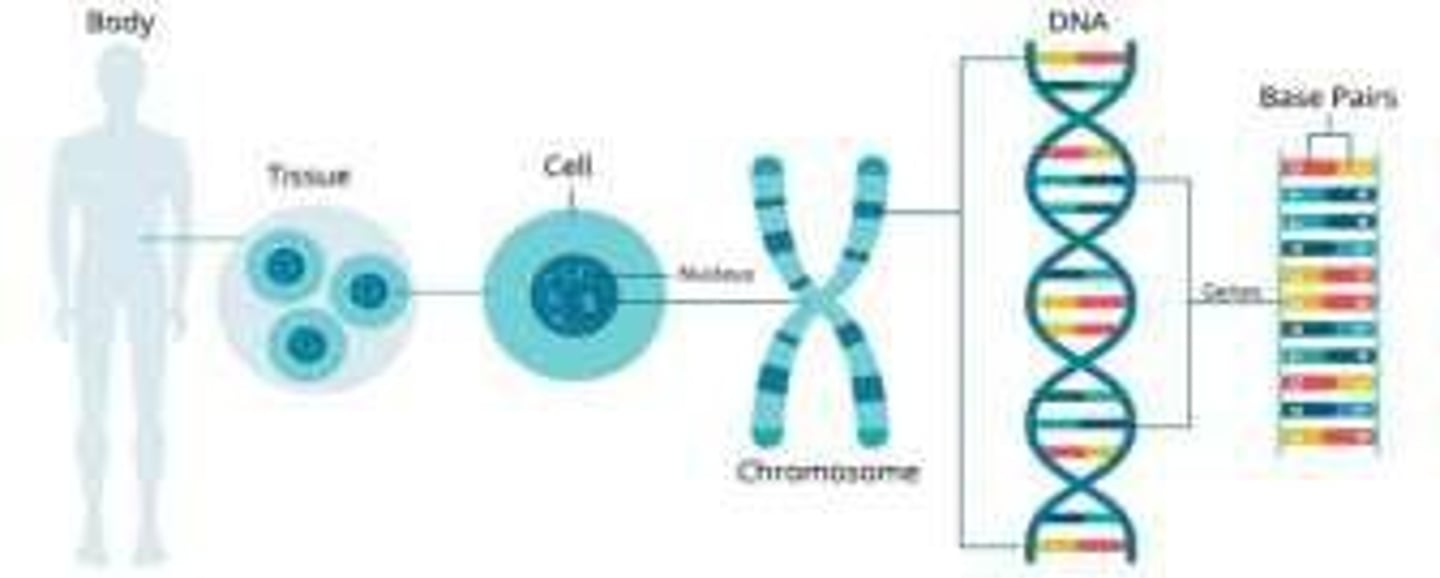PHYSICAL SELF
1/25
There's no tags or description
Looks like no tags are added yet.
Name | Mastery | Learn | Test | Matching | Spaced |
|---|
No study sessions yet.
26 Terms
Physical Self
refers to the physical body of an individual
Gregor Mendel
Father of modern genetics
- discovered that traits are passed down from one
generation to the next in a predictable way
- it is through the genes that traits are passed down.
Heredity
the genetic transmission of heritable characteristics from parents to offspring
Dominant Inheritance
only the dominant gene is expressed (RR or Rr/rR)
Recessive Inheritance
the child receives identical recessive alleles, resulting in the expression of a nondominant trait (rr). Ex: red hair
Nature
the interplay between heredity (inborn traits & characteristics inherited from biological parents)
Nurture
The environment (nonhereditary, experiential influence)
relative and contextual
Cultural Standards of Beauty, reaching a consensus regarding the definition of beauty is difficult to do, this is because beauty is r______ and it is c_______
Giraffe women
a cultural practice in Myanmar & Thailand where women wear brass spiral rings around their necks to elongate them, starting from childhood
Elongated earlobes
a practice among the Masai tribe & other ethnic groups in Africa where women elongate their earlobes as a form of status
Pure white skin
an obsession in Oriental cultures (e.g., South Korea, China, Japan) where pale skin is a symbol of wealth
Plus size
in ancient Nigeria, being fat was viewed as a sign of prosperity, fertility, and beauty, with fattening rooms used among well-off families.
-Lackoff & Scherr (1989)
"Beauty was not just a product of wealth, but a commodity in and of itself. In words, it was no longer matter of looking to wealth to beauty, but of looking to beauty to find. Now, beauty could give the illusion of wealth.
Chromosomes
we have 23 pairs of chromosomes, including 22 pairs of autosomes and 1 pair of sex chromosomes (XX or XY)

Philippine Standards of Beauty
The concept of physical beauty in the _________ is influenced by colonial history and Eurocentric perspectives. we have a very Eurocentric perspective when it comes to beauty.
Body Image
- how individuals perceive, think, and feel about their body and physical appearance.
- Body image may be aligned or not aligned with an individual's actual appearance.
Appearance
Everything about a person that others can observe such as height, weight, skin color, clothes, and hairstyle.
Self-esteem
A person's overall evaluation of his/her own worth.
Causes of Poor Body Image
Emphasis on an ideal body by parents/society, bullying, peer pressure, and media representation.
Effects of Poor Body Image
Girls with higher body dissatisfaction are likely to experience depression and low self-esteem.
Anorexia Nervosa
An eating disorder where the person refuses to eat for fear of gaining weight, leading to severe starvation and death.
Bulimia Nervosa
An eating disorder characterized by uncontrollable binge eating followed by compensatory behaviors to avoid weight gain.
Body dysmorphia
A mental health condition where a person is excessively concerned about and preoccupied with perceived flaws in their physical appearance.
Importance of Beauty
- Beauty has historically been valued as it signals youth, health, and fertility.
- Attractive individuals often experience advantages in life:
- They are preferred as mates.
- They have more career opportunities (hiring, promotions, income).
- They are perceived more positively.
Eurocentric Perspective on Beauty
A viewpoint that prioritizes European standards of beauty, affecting local beauty ideals.
(Jeffreys, 2005). Celebrating Beauty in Diversity
He states that Resisting cultural beauty standards is necessary to celebrate beauty in diversity, requiring a culture that rejects societal dictates on appearance